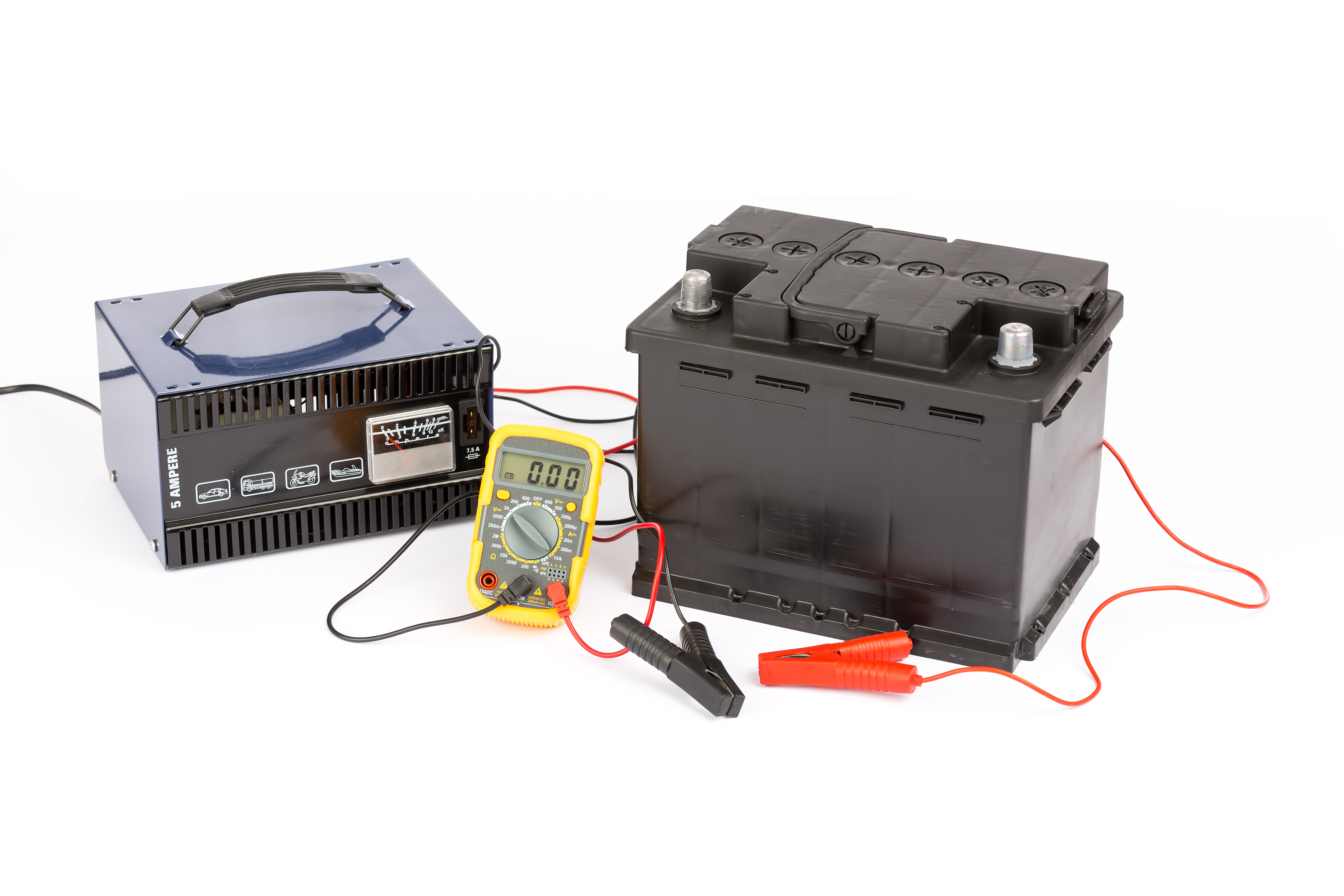
Charging AGM and GEL batteries
- Only charge AGM or GEL batteries using a genuine and reliable temperature-sensing voltage-regulated charger.
- Never use a constant current charger without voltage regulation!
- Charging Current or Amps is the flow of electricity. Every battery can only store, deliver or receive a certain amount of electricity. Voltage is electrical pressure. The amount of voltage dictates the rate at which the amps will flow into the battery during the charging process. The temperature at which this process is taking place also affects charging. When the correct pressure is used at the right temperature, the battery will be charged at its optimal rate. If too much pressure (wrong voltage settings) is used, excess current or charge will flow through the battery than it can absorb. This will cause the battery to gas and generate hydrogen and oxygen faster than it can be recombined. This will lead to the destruction of the battery.
- GEL batteries maintain absorption charge voltage at no more than 2.35 +/- .5 volts per cell and float voltage at no more than 2.25 volts per cell at 25°C/77°F.
- AGM batteries maintain absorption charge voltage at no more than 2.45 +/- .5 volts per cell and float voltage at no more than 2.27 volts per cell at 25°C/77°F.
- Compensation for battery temperature above or below 25°C/77°F can be made by:
- Subtracting005 volts per cell for each 1°C (0.003 volts per 1°F) above 25°C or,
- adding 0.005 volts per cell for each 1°C (0.003 volts per 1°F) below 25°C
- When charging, consider that to replenish the ampere-hours removed in the discharge process adequately, you will need to replace 104% to 112% of the charge removed for AGM and GELL batteries.
- The time it will take to charge will depend on certain variables such as the depth of the discharge, the ambient and battery temperature, the age/condition of the battery and the charger's overall features. Typically, you should expect that it will take 60%-80% of the charge time to return the battery to within 95% of its original capacity. It will take the remaining 20% - 40% of the charge time to recharge completely.
- The process of charging a battery can reasonably be considered complete when:
- The voltage does not continue to rise and remains stable over a measured period (voltage wins over time) or,
- When a 100AH battery with a 3% self-discharge rate can be considered to be fully charged when the charge rate has been maintained at a level of </=3 amps for a period not longer than 4 hours (time wins over-voltage)
WARNING – DO NOT EQUALIZE CHARGE GELL OR AGM BATTERIES! Equalizing is an “over voltage-over charge” performed on flooded lead-acid batteries after they have been fully charged to help eliminate acid stratification. It helps to eliminate the acid stratification and sulfation that happens in all flooded lead acid batteries. Acid Stratification is the #1 killer of flooded lead acid batteries.
Laboratory-designed, specific to Discover, “Balance” charge algorithms have been designed and are included in all Discover recommended Industrial Commercial charges offered for sale wherever our Discover AGM and GELL VRLA DRY CELL products are sold. Visually the Balance Charging curve diagram is similar to a flooded equalize charge curve in its finishing voltage. Still, it is strictly controlled to promote proper active material conversion and not to promote gassing or bubbling of the acid to help reduce acid stratification, as in a flooded battery. Discover’s Balance charging algorithms are HIGHLY recommended for batteries being installed in strings, larger batteries using taller plate groups and/or with batteries constantly being subjected to high-rate deep discharges.
